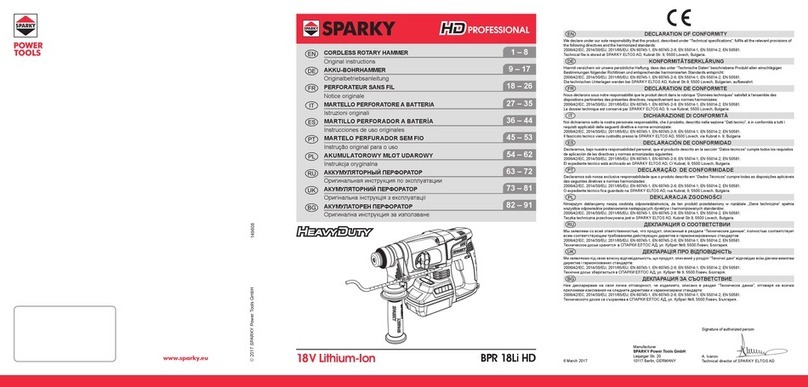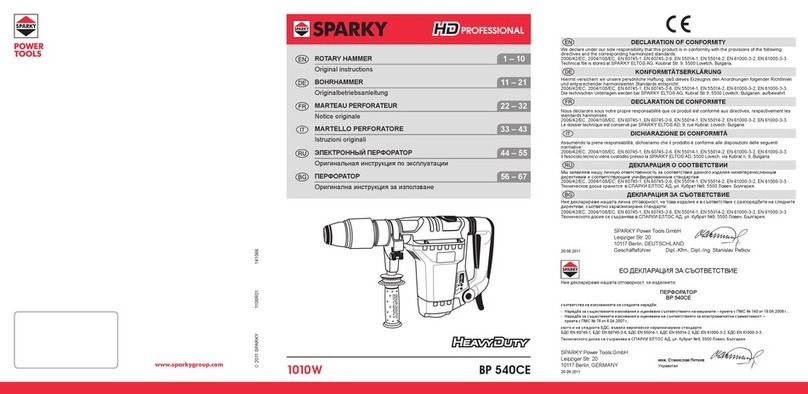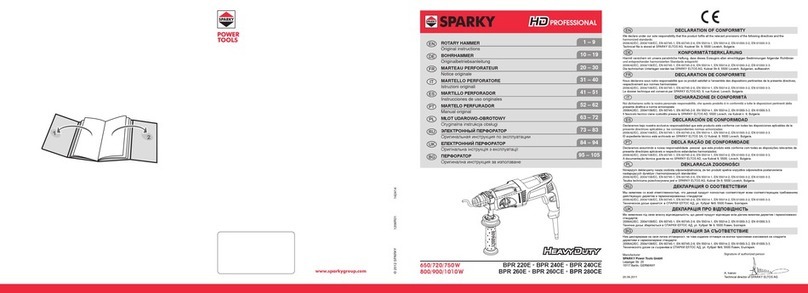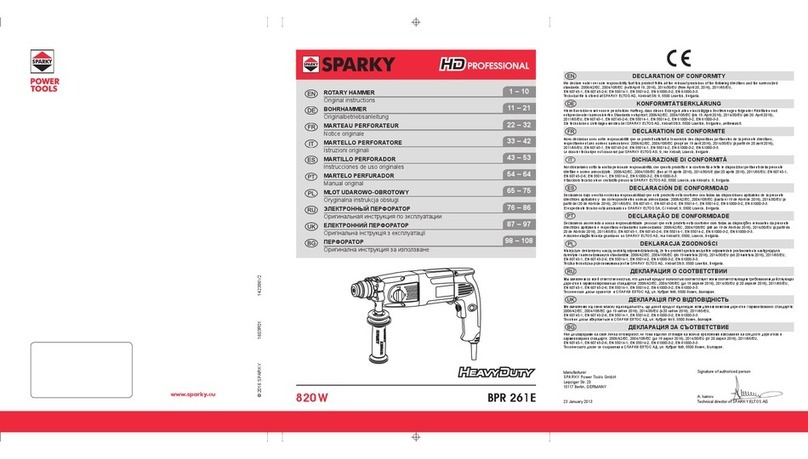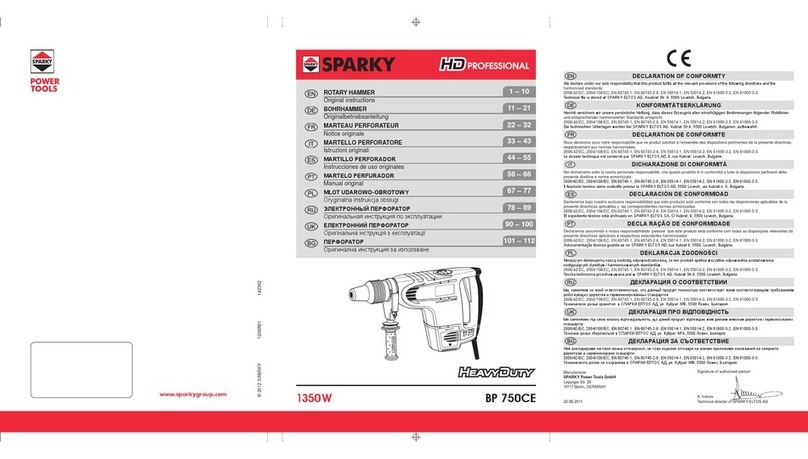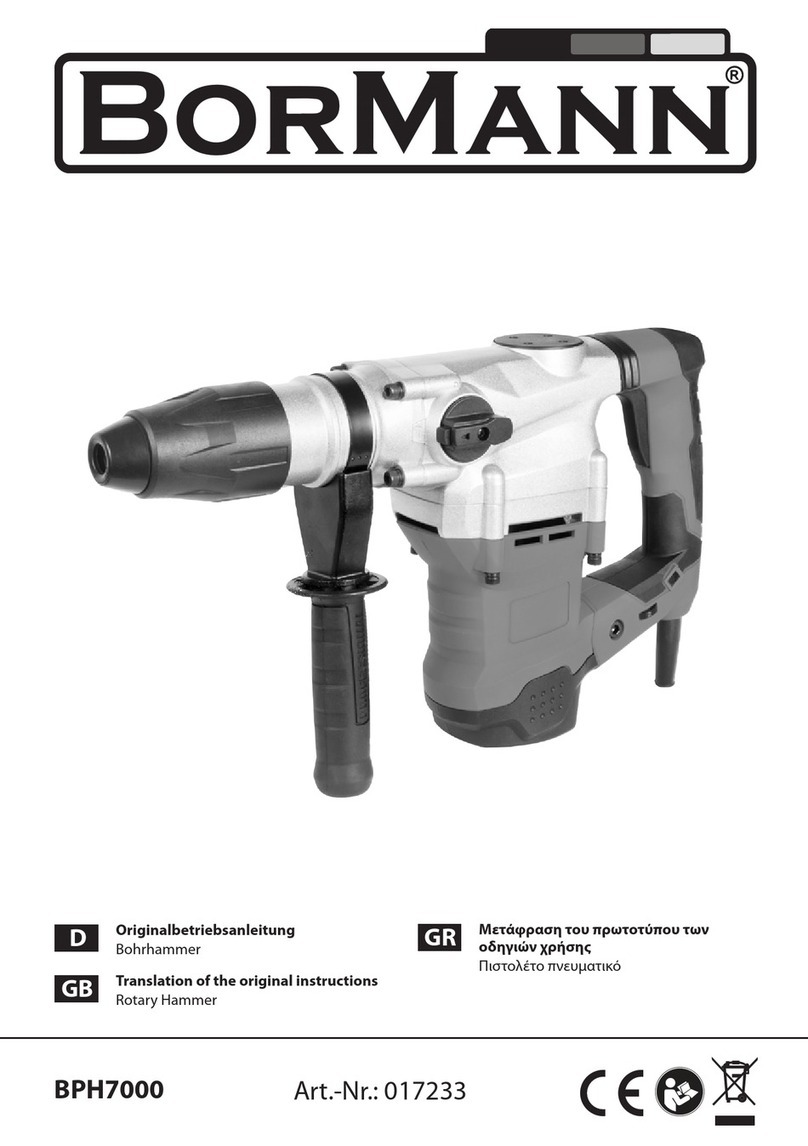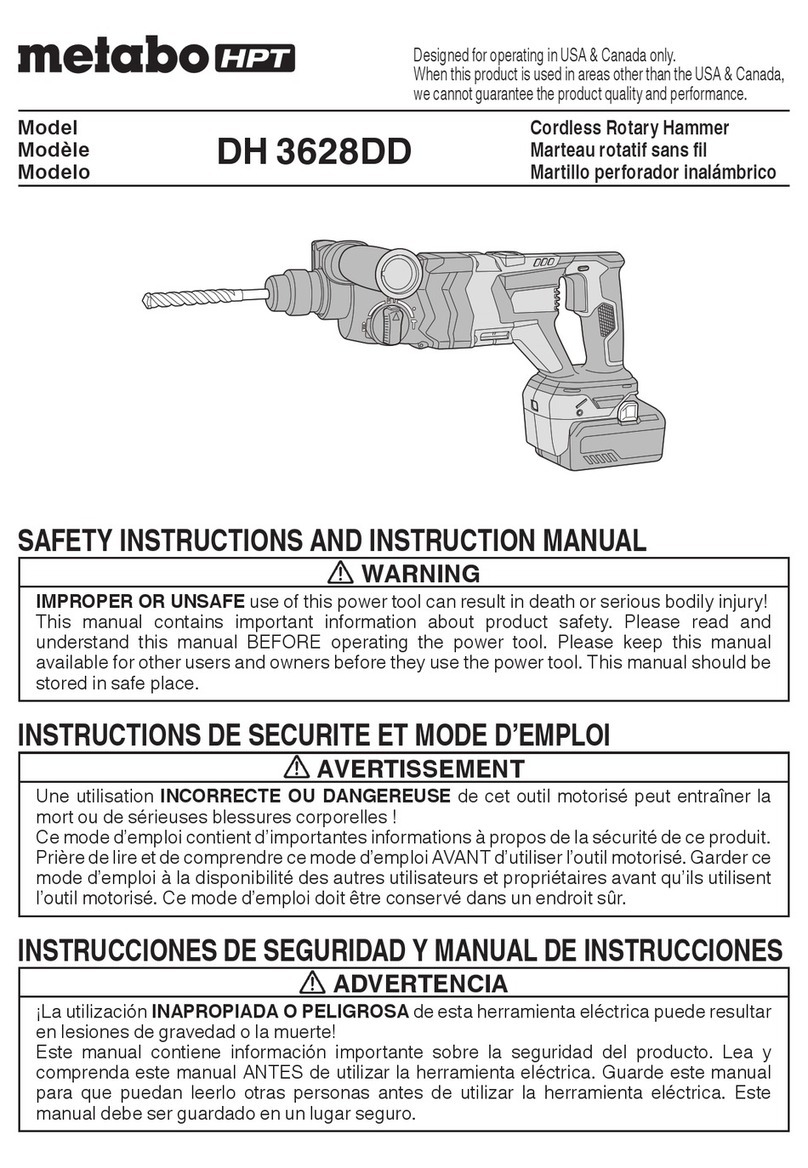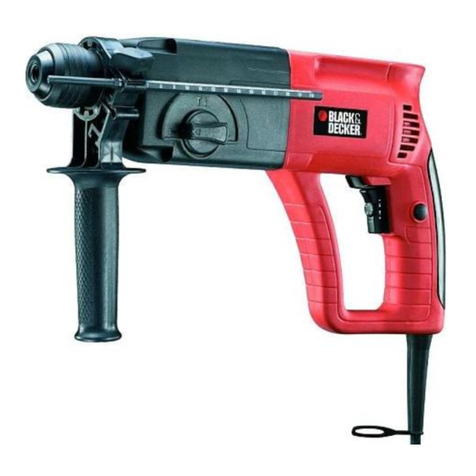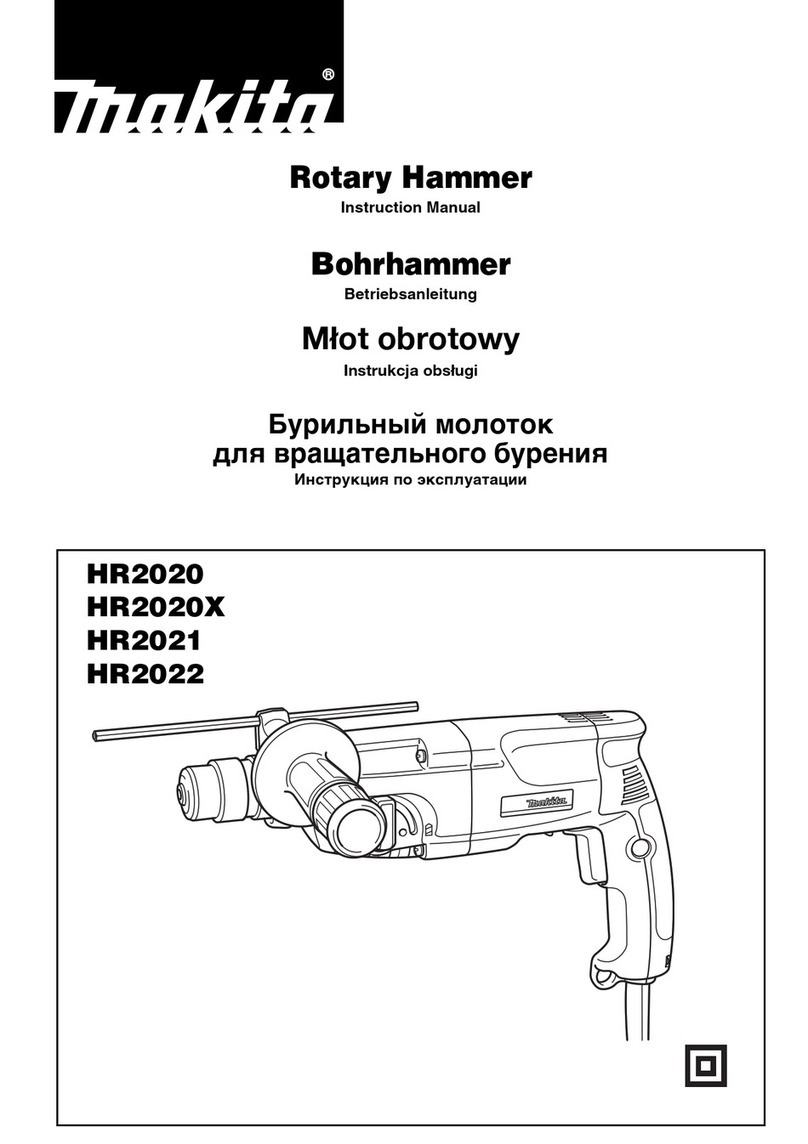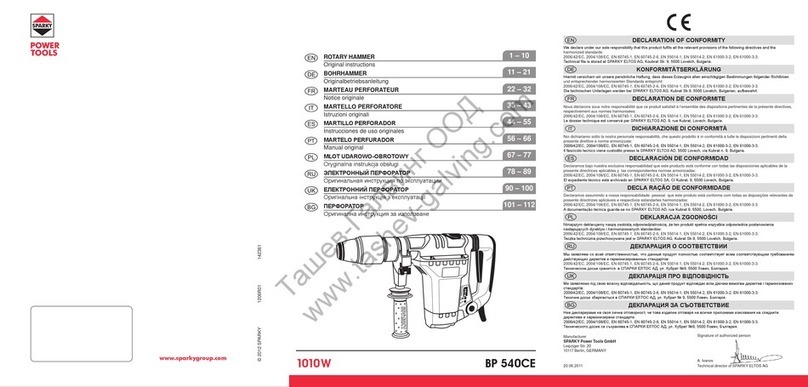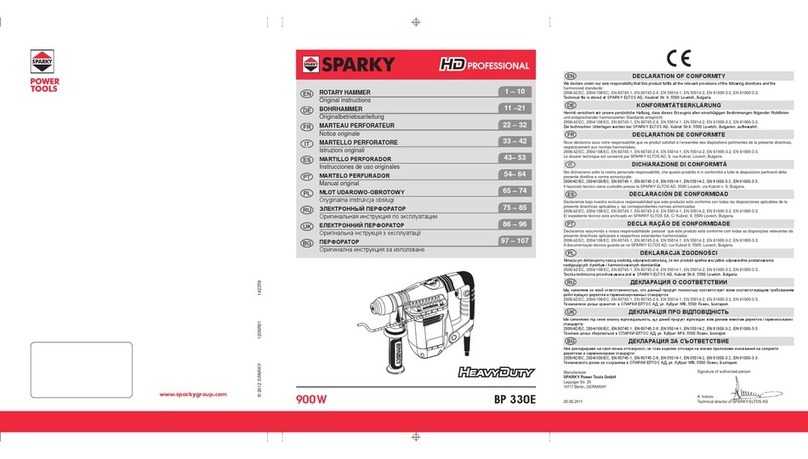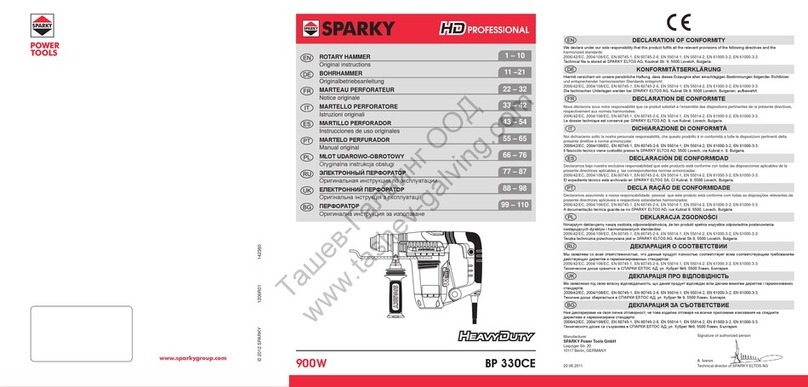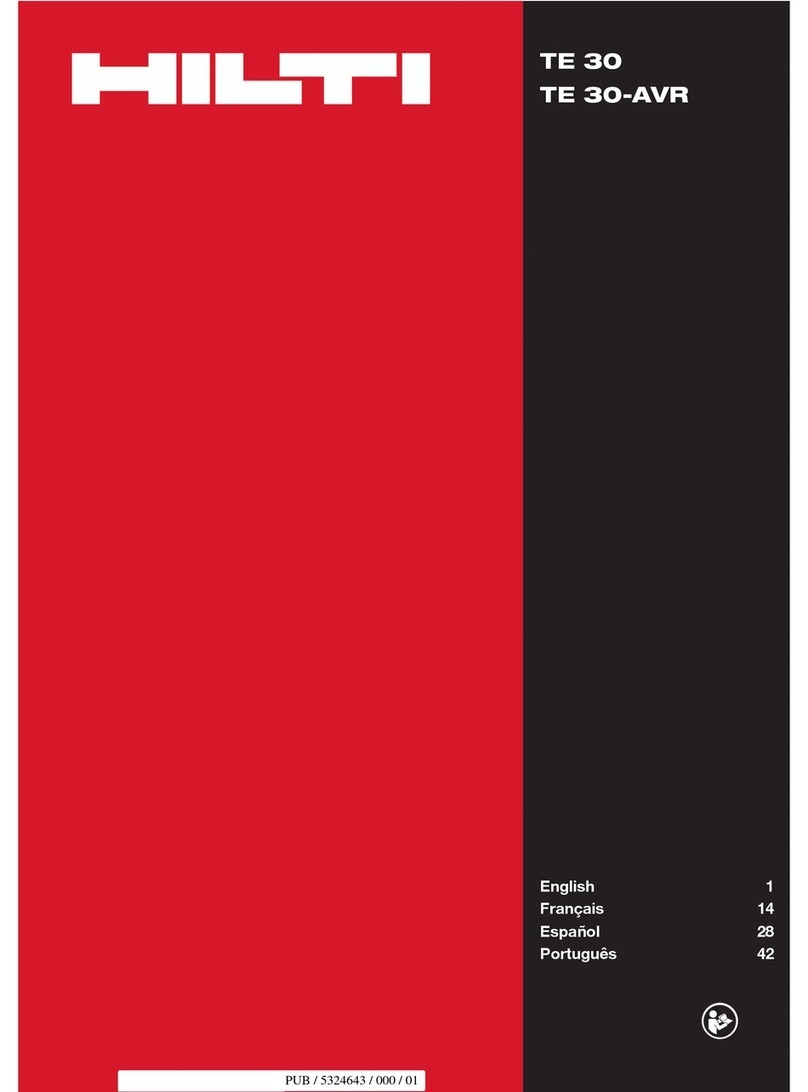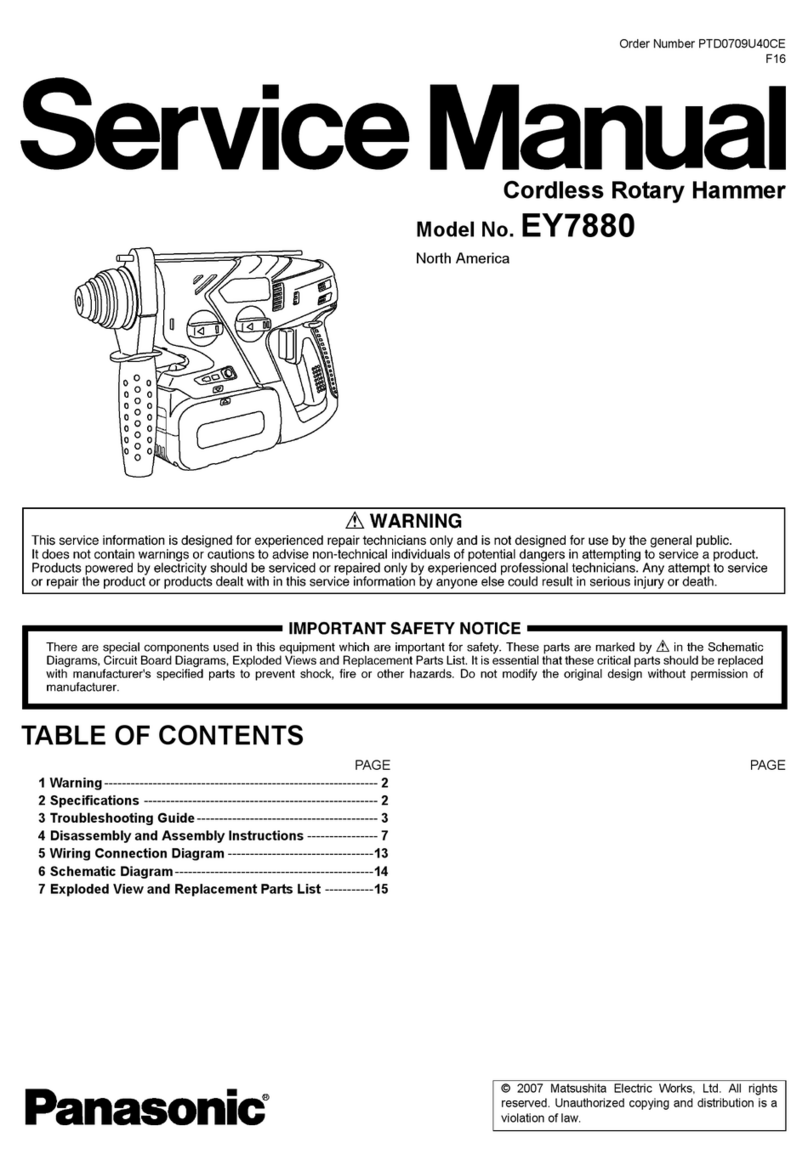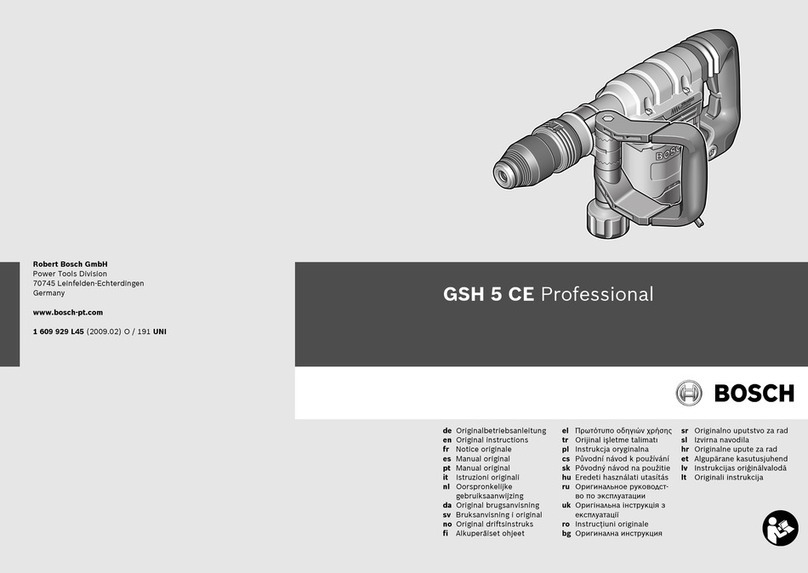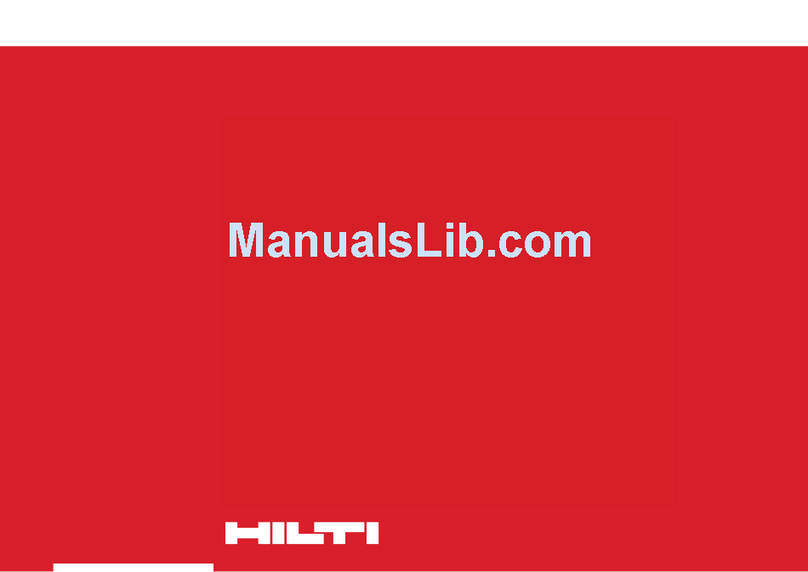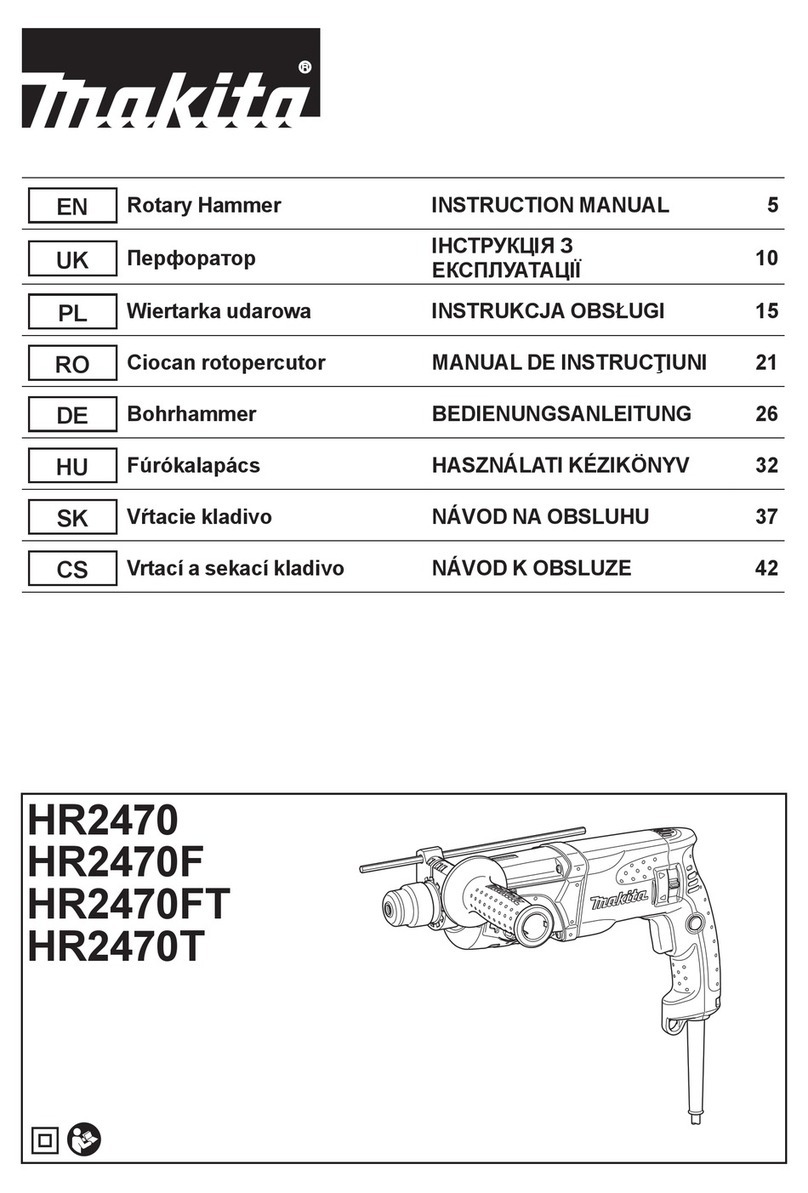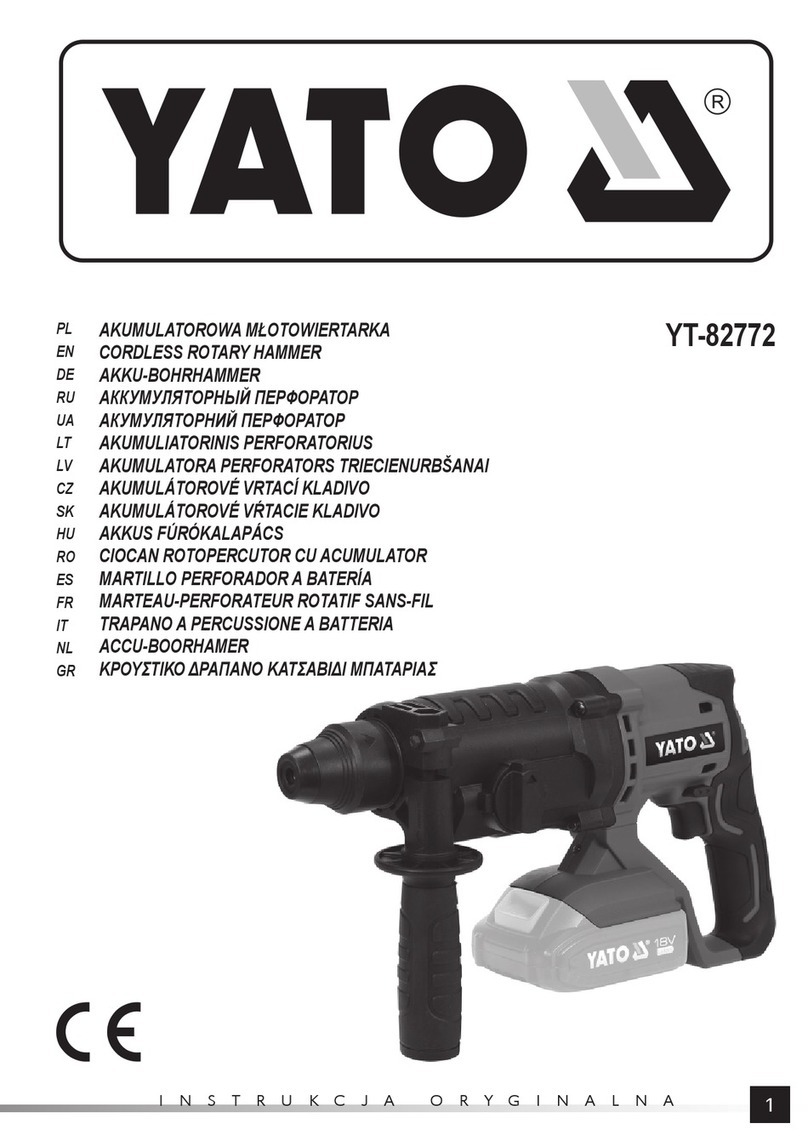of inattention while operating power tools
b) Use personal protective equipment. Al-
ways wear eye protection. Protective equip-
ment such as dust mask, non-skid safety
shoes, hard hat, or hearing protection used
for appropriate conditions will reduce personal
c) Prevent unintentional starting. Ensure
the switch is in the off-position before
connecting to power source and/or bat-
tery pack, picking up or carrying the tool.
Carrying power tools with your finger on the
switch or energising power tools that have
the switch on invites accidents.
d)Remove any adjusting key or wrench be-
fore turning the power tool on. A wrench
or a key left attached to a rotating part of the
e) Do not overreach. Keep proper footing
and balance at all times. This enables bet-
ter control of the power tool in unexpected
situations.
f) Dress properly. Do not wear loose cloth-
ing or jewellery. Keep your hair, cloth-
ing and gloves away from moving parts.
caught in moving parts.
g)If devices are provided for the connec-
tion of dust extraction and collection fa-
cilities, ensure these are connected and
properly used. Use of dust collection can
reduce dust-related hazards.
4. POWER TOOL USE AND CARE
a) Do not force the power tool. Use the cor-
rect power tool for your application. The
safer at the rate for which it was designed.
b)Do not use the power tool if the switch
does not turn it on and off. Any power tool
that cannot be controlled with the switch is
dangerous and must be repaired.
c) Disconnect the plug from the power
source and/or the battery pack from the
power tool before making any adjust-
ments, changing accessories, or storing
power tools. Such preventive safety meas-
uresreducetheriskofstartingthepowertool
accidentally.
d)Store idle power tools out of the reach
of children and do not allow persons
unfamiliar with the power tool or these
instructions to operate the power tool.
Power tools are dangerous in the hands of
untrained users.
e) Maintain power tools.Checkformisalign-
ment or binding of moving parts, break-
age of parts and any other condition that
may affect the power tool’s operation. If
damaged, have the power tool repaired
before use. Many accidents are caused by
poorly maintained power tools.
f) Keep cutting tools sharp and clean.
Properly maintained cutting tools with sharp
cutting edges are less likely to bind and are
easier to control.
g)Use the power tool, accessories and tool
bits etc. in accordance with these in-
structions, taking into account the work-
ing conditions and the work to be per-
formed. Use of the power tool for operations
different from those intended could result in
a hazardous situation.
5. SERVICE
a) Have your power tool serviced by a quali-
fied repair person using only identical
replacement parts. Thiswillensurethat the
safety of the power tool is maintained.
IV - Additional safety
rules for cordless
rotary hammers
Be aware that this tool is always in operat-▪
ingcondition,becauseitdoesnothavetobe
plugged into an electrical outlet. The trigger
switchhastobeinOFFpositionwheninstalling
orremovingthebatterypack.
Wear ear protectors when operating with▪rotaryhammers.Exposuretonoisecancause
hearing loss.
During operation provide eye protection to▪prevent eyes from exposure to flying parti-
cles. Wear goggles.
Take protective measures against inhala-▪tion of dust. Some materials can contain
toxic ingredients. Wear a dust mask.
The dust, separated while processing materi-▪als, containing quartz (SiO2) is dangerous to
your health. Do not process materials contain-
ing asbestos.
While operating the machine, always hold it▪
firmlywithbothhandsandprovideforasecure
stance.Thepower tool isguidedmoresecurely
with both hands.
Prior to operation use suitable detectors to de-▪


